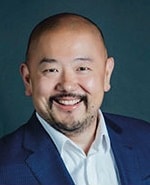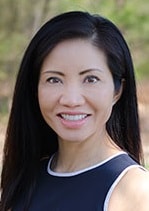Colleagues weigh in on their most important focus when making a case presentation for OAT decisions.
Some call it “case presentation.” Others refer to it as “presenting treatment”, and there are even a few that use the 4 letter “S” word – SELL. No matter how beneficial oral appliance therapy (OAT) might be for a patient, the onus is on you to tap into what matters to your patient, highlight the value of treatment, and help them see a better future in exchange for payment. If you can’t help them see this light, it’s likely those prescriptions will remain blank.
In each issue of Dental Sleep Practice we ask experienced subject matter experts the same 3 questions. Here are their insights about improving case presentation… in Your Own Words.
- What is the most common objection & how do you overcome it?
- What 2 case presentation tips would you give to a DSM practitioner?
- What is one aspect of OAT case presentation you changed, why, and how did it make a positive impact?
 Jerry Hu, DDS
Jerry Hu, DDS
- There are 2 equally common objections my practice faces. The first relates to the patients’ knowledge and awareness of how serious untreated OSA and UARS can be. The solution is always to communicate thoroughly. Digging into their health history, connecting the dots to their co-morbidities and systemic illnesses, reviewing their sleep test results and screening data from equipment, plus allowing your team to do their roles are all essential. Engaging with the patient’s bed partner is also critical, and allotting proper time is key to developing exceptional care and follow up. The second objection is financial, but once the first objection is overcome, the second is overcome rather naturally because the patient sees the value, benefit, and level of care you provide.
- In my practice, we are equipment lov When it comes to case closures, take the time to measure and collect baseline data, involve the patient with doing something “physical” such as using the Eccovision and other activities like the cottle test. These are priceless steps that guide patients to engage, accept, and want to progress with additional screening and treatment. It’s like getting an EKG and a printout report; these are very powerful tools to use to help patients co-discover their health condition and problems.
- New technology and innovations aiming toward OAT precision and comfort have allowed my office to enhance our presentation and reputation. Using equipment to measure for patients’ unique “sweet spot” for the initial position of the OAT allows my practice to save time by having minimal to no calibration need. In my state of Alaska, some patients travel quite far to see us. Decreasing the number of appointments needed and respecting precision and comfort, allow for better compliance and overall effectiveness outcomes. These all matter for achieving long term success. Time is money.
 Mark Murphy, DDS, D.ABDSM
Mark Murphy, DDS, D.ABDSM
- The most common objection is in our own dental thinking paradigm, where we set up systems to protect our practice from NOT getting paid. That construct is important with dental “insurance” (which is NOT real insurance taking on risk against a catastrophic loss) but NOT with medical. Virtually NO one ever discusses or asks how much it will cost in a medical practice, or had patients sign financial agreements or make down payments before treatment. Act like you are practicing medicine when doing sleep and you will do more.
- Assume the patient is moving forward with testing and/or treatment because it is a medically necessary treatment….and covered by medical insurance…and then stay out of their way. Just make it easy to do business with you and talk way less about money and how much it costs. You may get burned (rarely) but you will close many more cases – the math works. I worked with an office that moved from under 25% to 80% closure rates with minimal nonpayment. The results were HUGE!
- There is a study about the medical patient pathway that describes three questions that patients want answers to; Do I have this? Is it serious? And can you treat this? Keeping these three points in mind helps you construct a talk track that pre-answers these three things while education the patient during the consultation and treatment presentation.
 Lesia Crawford
Lesia Crawford
- This is no surprise – out of pocket cost or “I don’t mind paying for it but how do I know it will it work for me?” When cost is a challenge, I let the patient know that we do not turn anyone away who needs treatment. Whatever it takes to make it affordable we are willing to help. We offer CareCredit, custom payment plans, and emphasize maximizing their insurance.
When it comes to treatment efficacy, I let them know we can never guarantee it will work 100%. I warmly tell them that we have helped patients who have severe apnea with 70 to 90 episodes per hour and brought them down to 2 or 3. We have also had patients where no matter what we do, it just does not work. We will do all we can if you are willing to give it a 100% effort to make it work for you, we will as well.
- Spend more time listening to your patient and their concerns and goals. You have two ears and one mouth. Listen more. Talk less. Ask why they are there. What do they want to accomplish? How is their sleep apnea affecting their life?
Personalize their solutions. If they sleep with 2 cats, they do NOT care about snoring. If they are relegated to the couch by an agitated bed partner, they DO care about snoring. Get them excited about restorative sleep, feeling better, and moving forward to a solution to their health or social problems.
- This is my favorite question. During the first couple of years in the dental office, I was afraid to offer the option of moving forward with sleep apnea treatment until we had an approval from the insurance company. The patient was in the office, excited to get started, and I put the brakes on and said, “We will call you when your insurance approves the services.” Now, we start right away and do not make the patients wait. We schedule them out three weeks for delivery and that is plenty of time to get an approval. If it denied and we have to appeal, or we are working on a GAP and it takes longer, we simply move the appointment out a week or two. Our acceptance rate went from less than 50% to greater than 85% overnight.
Jennifer Le, DMD, D.ABDSM, CPCC
- The most common objection to oral appliance therapy is concern with changes in dentition. Being direct with the patient through open communication and education on the pros and cons of various treatment options tremendously helps with case acceptance and minimizes Take the time to reassure the patients that you are available for questions and concerns throughout their treatment. Give patients literature and recommendations for video demonstrations of exercises. All therapy options have risks. Educate yourself on them so that you can answer patient’s questions in order to help them arrive at a therapy option that best fits their needs.
- Patient Education – Many patients will arrive in your chair not understanding what OSA or AHI means. Take the time to help patients understand their diagnosis. Help them appreciate the importance of compliance on their overall health. Go beyond “you’ll feel better” and discuss mind and body health. Discuss importance of each sleep cycle and why uninterrupted sleep is imperative to facilitating regenerative sleep on a systemic level.
Pre-treatment baseline – Make sure to have clinical documentation of dentition, pre-treatment sleep studies, dental clearance. Models, digital scans, and intraoral documentation of pre-treatment dentition will allow better assessment of rate of change or any concerns of dental changes as treatment progresses.
Discuss reasonable expectations of various types of appliances based on your clinical findings of the patient’s self-reported parafunctions and anatomical variations.
- I am 100% involved in the patient’s OAT case presentation from start to finish. This helps to establish confidence in OAT therapy because patients are able to ask questions and establish rapport. This has tremendously reduced miscommunication and increased case acceptance and referrals.
 Jay Neuhaus, DDS, D.ABDSM
Jay Neuhaus, DDS, D.ABDSM
- My practice is limited to DSM, and most of my patients are referrals from MDs, Cardiologists, ENTs, and other den Because most of my patients are “pre-qualified”, the main objection I get is “Why do I have to wait so long (3-4 weeks) to receive my appliance?” My quick response is always “Why did you wait so many years to begin treatment?” And then I offer them an interim temporary appliance at an additional fee.
- First, I’d say focus on the patient’s specific chief complaint (snoring, excessive daytime sleepiness, etc.) as it relates to their specific comorbidities (hypertension, stroke, afib, cognitive deficiencies, etc.). Make sure they understand that sleep apnea can markedly shorten their life
Secondly, I’d suggest they under-promise & over-deliver! Never make the false claim that you can cure everything with your appliance! Assure them that you will do everything in your power to help them live with their very serious disease. And then DO SO!
- When I still ran a very successful dental practice, I quickly learned not to mix in my “sleep” case presentations into my regular schedule. You really must be in a different mindset. Put on your “medical hat” and get out of your “dental mentality hat.” Never do the presentation in a dental operatory. Don’t wear your typical dental scrubs or gowns! Talk like a “real doctor” while you’re discussing a real life-threatening medical condition. I found the best way to do this was to set aside a half-day each week specifically for sleep case presentations.
Patti Staniorski
- It’s very common for the patient to come in for the consultation and not understand what Obstructive Sleep Apnea (OSA) is because it was never explained to them. They were just told, “You have OSA and you’re getting a CPAP.” When that happens, the patient doesn’t usually believe they have a life-threatening condition, and so we explain what OSA is and how it can take its toll on the entire body.
- When a clinician or staff member has gone through the entire process, from diagnosis to treatment, they can better relate to the patient and vice versa. This can make all the difference in the world for their successful treatment.
If the patient is still hesitant, I explain they have four options: 1) wear a CPAP (which they won’t do), 2) try the oral device, 3) have surgery, or 4) do nothing. If you do nothing, then you have a 92% chance of having a stroke or heart attack.
- We require that the patient’s spouse or bed partner be present at the consultation. The reason for this is so that they can listen and learn along with the patient. This minimizes any miscommunication when the patient goes home to discuss what happened at the consultation. The patient is the one sleeping, not the bed partner. The bed partner is the one hearing the snoring, lying awake fearful when the partner stops breathing. They usually have many more questions. Once we implemented this protocol, our case acceptance rate climbed 82%.
From home sleep testing to case presentation, input from colleagues can help to provide insight and direction. Read a previous “In Your Own Words” column about HST here: https://dentalsleeppractice.com/in-your-own-words-5/



